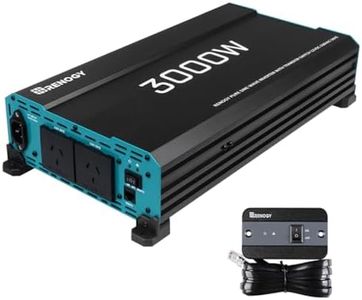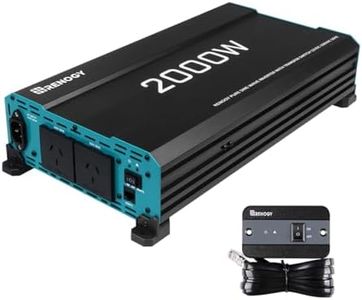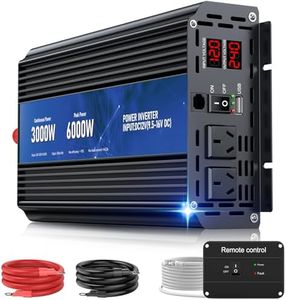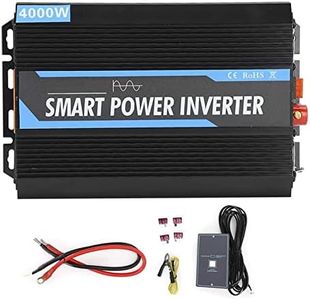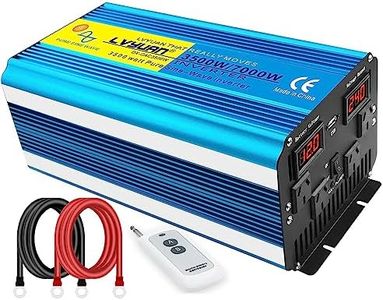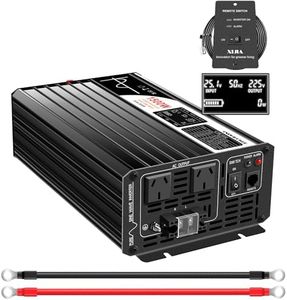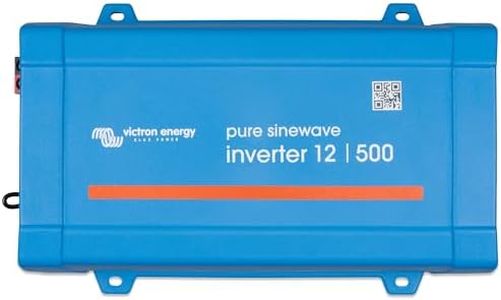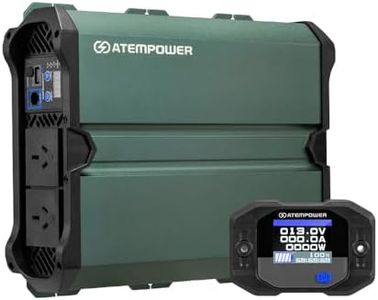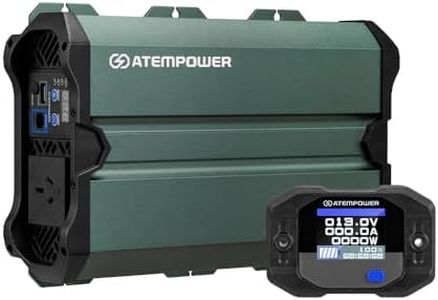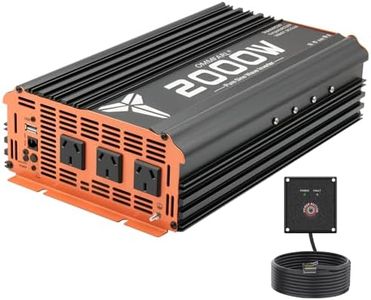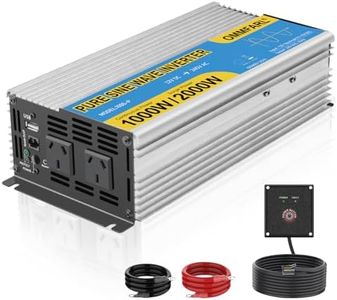We Use CookiesWe use cookies to enhance the security, performance,
functionality and for analytical and promotional activities. By continuing to browse this site you
are agreeing to our privacy policy
10 Best Rv Inverters
From leading brands and best sellers available on the web.Buying Guide for the Best Rv Inverters
Choosing the right RV inverter is crucial if you want to enjoy the comforts of home, like charging devices or running small appliances while camping in your RV. An inverter transforms your RV’s battery power (DC) into the type of electricity (AC) that most household items use. To find the best fit, you should think about what you plan to power, how long you’ll need it, and the type of camping (on-grid or off-grid) you do. Understanding the main features and how they meet your needs will help you make a confident and suitable choice, so you enjoy power on the go without hassle.Wattage (Power Output)Wattage tells you how much total power the inverter can supply at once. This is important because every device you plug in adds to the load. Lower wattage (300-1000W) is fine for basic electronics like phones or laptops. Medium wattage (1000-2000W) handles things like microwaves or coffee makers. High wattage (2000W and above) is needed for more demanding appliances or running several at the same time. To choose what's right for you, add up the wattage of all the devices you want to operate together, and give yourself a safety margin for starting bigger appliances.
Waveform TypeWaveform refers to the kind of AC power the inverter produces. Modified sine wave is the simpler, less expensive type that works for basic devices, but may cause issues with sensitive electronics, motors, or audio equipment. Pure sine wave inverters offer power similar to household outlets and are safe for all devices, including newer electronics and medical equipment. Choose modified sine wave for lights and simple gadgets, but pure sine wave if you use sensitive or variable-speed appliances.
Input VoltageInput voltage is the kind of battery your inverter connects to, often 12V or 24V. This spec must match your RV’s battery system. Most RVs use 12V systems, but larger setups may use 24V for efficiency. Using the wrong voltage won't work or can damage your inverter or batteries. Check your RV's electrical system before deciding.
Continuous vs Peak PowerContinuous power is what the inverter can supply over long periods, while peak power is the short burst available for starting appliances, like a fridge compressor. Peak values are always higher, but only briefly. Make sure the inverter’s continuous rating fits your needs, and that its peak rating is high enough for devices with heavy startup loads. If you plan to run things like refrigerators or power tools, pay close attention to peak ratings.
Safety FeaturesSafety features protect you, your RV, and your devices. These often include protections against overload, short-circuit, overheating, under-voltage, and over-voltage. Good inverters should have clear warnings and automatic shut-offs. Consider how often children or pets are present, or if the inverter is located in a difficult-to-monitor space. Pick an inverter with robust safety measures if you’ll leave it running unattended or rely on it for important devices.
Size and InstallationInverters vary in size, and the right fit depends on your available space and installation skills. Smaller, portable inverters are great for light needs and quick setups. Larger, hardwired inverters suit big or permanent installations where you want to power part or all of the RV. If you want a tidy, seamless power experience, plan ahead for where and how the inverter will be mounted and connected.
EfficiencyEfficiency is about how much battery power the inverter turns into usable electricity. Higher efficiency means more run time and less wasted energy, so your batteries last longer between charges. Efficiency ratings are usually shown as a percentage. If you camp off-grid or need your batteries to last as long as possible, choose a model with higher efficiency.
